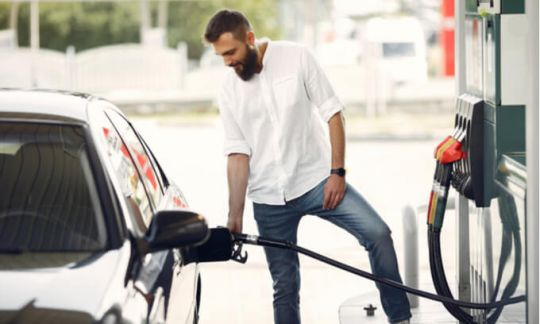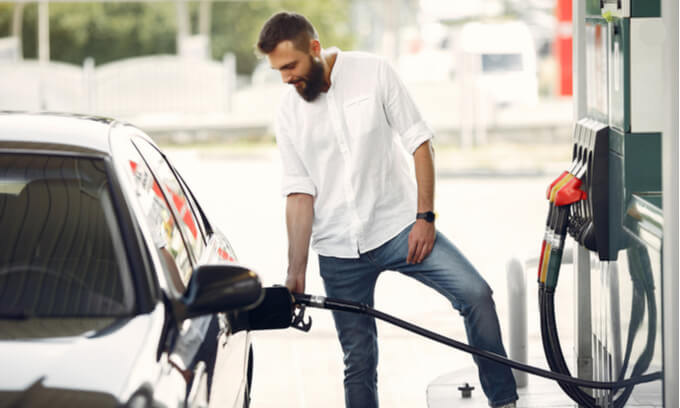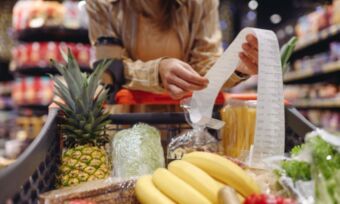Fuel excise cut should ease the pain at the bowser

The cut in the fuel excise announced in the 2022 federal Budget should make it cheaper for people to fill up at the bowser. But that relief is likely to be short-lived and could mean less money for investment in our roads. There are also concerns motorists may not see the full benefit of the cut at the bowser.
The Treasurer Josh Frydenberg announced the cut to the fuel excise in the 2022 federal Budget speech.
“Fuel excise will be cut in half,” he told Parliament. “For the next six months, Australians will save 22 cents a litre every time they fill up their car.”
Mr Frydenberg said the cut would take place from 12am on 30 March, but it could take two weeks before any impact flows through to the bowser. It ends September 28.
The actual reduction is 22.1 cents per litre. Before the cut, motorists were paying a tax of 44.2 cents a litre in fuel excise, regardless of the actual bowser price of the fuel which also includes GST.
“A family with two cars who fill up once a week could save around $30 a week or around $700 over the next six months,” said the Treasurer.
That estimate assumes the family uses about 135 litres of fuel a week ($30 ÷ $0.221).
CommSec’s analysis of the Australian Bureau of Statistics household expenditure survey reportedly puts the average household using 35 litres of fuel per week. Based on that figure, the Treasurer’s 50% fuel excise cut would only lead to a weekly saving of about $7.74 (35 × $0.221). The Budget papers note the savings “would be less” for people who fill up on fuel blends such as E10 rather than purely petrol or diesel.
Fuel prices were rising
Fuel prices had been rising steadily of late and blamed partly for the hike in prices of other goods and services, with the Australian Bureau of Statistics putting annual inflation at 3.5%.
The national weekly average of regular unleaded was 179.1 cents a litre before the Russian invasion of Ukraine in February, according to the Australian Institute of Petroleum monitoring.
The outbreak of war between the two countries saw that national weekly average price hit 212.5 cents a litre in mid-March but it has started to fall since then.
Other countries have also cut their fuel excise tax amid rising prices. For example, New Zealand cut its fuel excise by 25 New Zealand cents a litre for three months.
The UK went further by cutting its fuel excise by 5 pence a litre for 12 months – a much longer period than Australia's six months and New Zealand's three. Fuel prices are much higher in the UK, where a litre of standard unleaded petrol (equivalent to our 95 RON fuel) costs about 286.5 cents a litre based on current exchange rates.
Cutback on road spending?
The NRMA is worried a cut in the fuel excise may lead to a reduction in government funding for road repairs and any new infrastructure.
Spokesperson Peter Khoury told Canstar: “The excise was designed to raise money for roads and we need that money.”
Mr Frydenberg pledged the cutback would not lead to a reduction in spending on roads.
“This temporary reduction in fuel excise will not come at a cost to road funding, which will see more than $12 billion spent in the coming year,” he said.
Will the excise cut be passed onto consumers?
While the excise cut will reduce the amount the government receives from the fuel tax, that doesn’t guarantee prices will fall. The bowser price is still subject to global oil prices, which have been quite volatile of late.
Mr Khoury is worried that any cut in the excise will be eroded if oil companies push up prices at the bowser.
That’s what’s reported to have happened in Ireland, after the government there announced a cut in its fuel excise earlier this month.
“Ensuring the cuts are passed on and not held by the oil companies will now be the challenge,” Mr Khoury told Canstar.

The Australian Automobile Association was also concerned the reduction may not be passed on to consumers.
“The immediate problem is that there is no guarantee that this tax cut will be passed on to motorists, as the international experience shows similar measures have delivered fuel retailer profits, rather than price drops for consumers,” said a spokesperson.
The RACQ said it welcomed the temporary fuel excise cut, and the promise to maintain road funding, so long as the price reduction was passed on to consumers.
“We know our members are hurting and we understand that record-high fuel prices, largely driven by the war in Ukraine, are adding to cost of living pressures,” said RACQ’s Head of Public Policy Susan Furze.
“Queenslanders deserve to know how the government will police this tax cut and ensure motorists receive the full benefit in the form of lower prices at the bowser.”
Mr Frydenberg said the competition watchdog, the Australian Competition and Consumer Commission, would be tasked with monitoring retailers to make sure the savings were passed on “in full”. He later confirmed the fuel excise cut would not be extended beyond the planned end date of 28 September 2022.
Labor said it would back the fuel excise cut and would consider whether or not to raise it again should it win power in this year’s federal election.
Read more: Federal Budget 2022: What it means for you
Cover image source: Atstock Productions/Shutterstock.com
This article was reviewed by our Sub Editor Tom Letts before it was updated, as part of our fact-checking process.

Michael is an award-winning journalist with more than three decades of experience. As a senior finance journalist at Canstar, Michael wrote more than 100 articles covering superannuation, savings, wealth, life insurance and home loans. His work's been referenced by a number of other finance publications, including Yahoo Finance and The Motley Fool.
Michael's worked as a reporter and producer for the BBC and ABC, including for Australian Story. He's also worked as a feature writer for The Courier-Mail and as a science and technology editor and commissioning editor at The Conversation.
Michael's professional awards include a Queensland Media Award and a highly commended in the Walkleys. In 2021 he was part of a team that was a finalist in the Australian Museum Eureka Prize for Science Journalism. He holds a Bachelor of Science in mathematics and applied physics (Manchester Metropolitan University) and a Masters of Science in pure mathematics (Liverpool University).





